This year marks the 50th anniversary of the R107 Mercedes-Benz SL, which arrived in 1971 and enjoyed 18 years in production. The history of Mercedes-Benz sports cars can be traced back to the 1950s when the 300 SL racing car picked up where the pre-war Silver Arrows left off. Here’s a suitably ‘Super-Leicht’ history of the sporting road cars.
W194 Mercedes-Benz 300 SL racing sports car
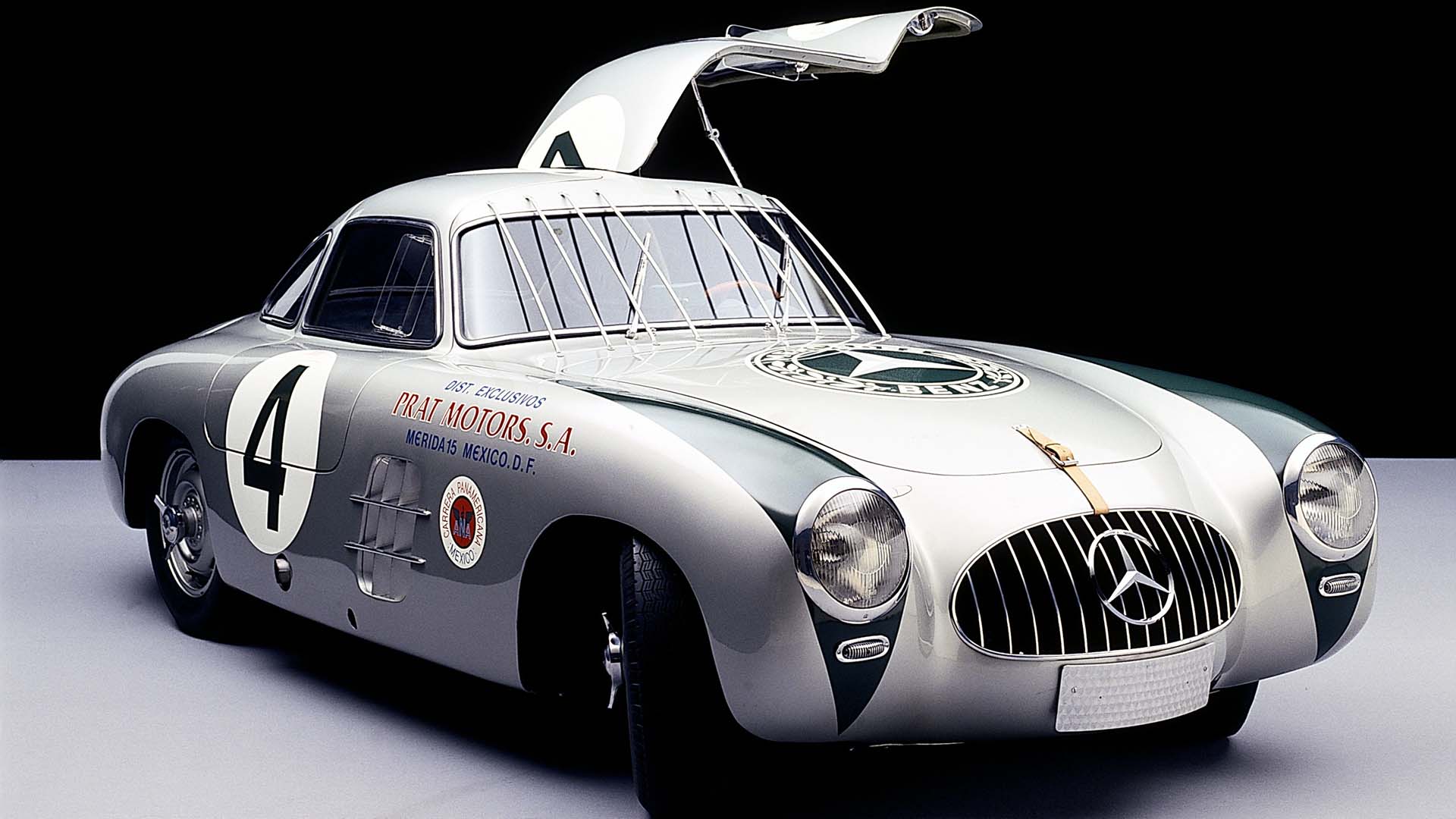
The story begins in 1951, when Mercedes-Benz decided to return to motor racing. The W194 300 SL – that’s ‘Super-Leicht’, or Super-Light in English – was the first Mercedes racing car since the Second World War, and 10 were built for the 1952 season. It was a successful debut, with the 300 SL securing second and fourth positions in the Mille Miglia, a triple victory in Bern, a double victory at Le Mans and a quadruple victory at the Nurburgring. It also sparked the development of the first road-going SL.
W198 Mercedes-Benz 300 SL Coupe
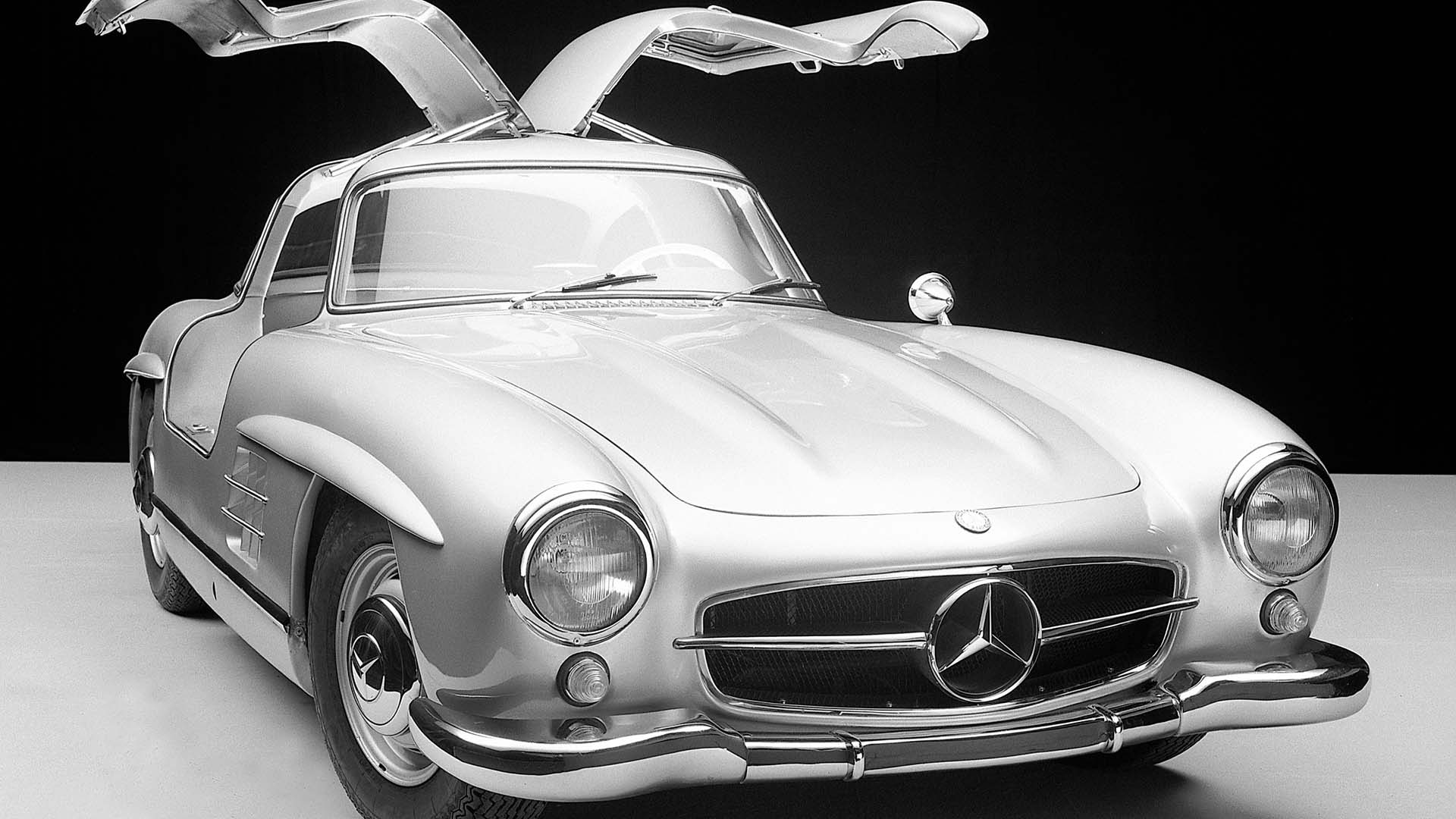
Max Hoffman, official US importer for the Mercedes-Benz brand, campaigned for a production sports car. It’s therefore fitting that the 300 SL Coupe was unveiled at the 1954 New York Motor Show. Technical details, like the space frame construction, 3.0-litre six-cylinder engine and 161mph top speed, were eclipsed by the car’s most iconic feature. The roof-hinged ‘Gullwing’ doors created a show-stopper, helping the 300 SL Coupe to secure 1,400 orders before production stopped in 1957.
W121 Mercedes-Benz 190 SL Roadster
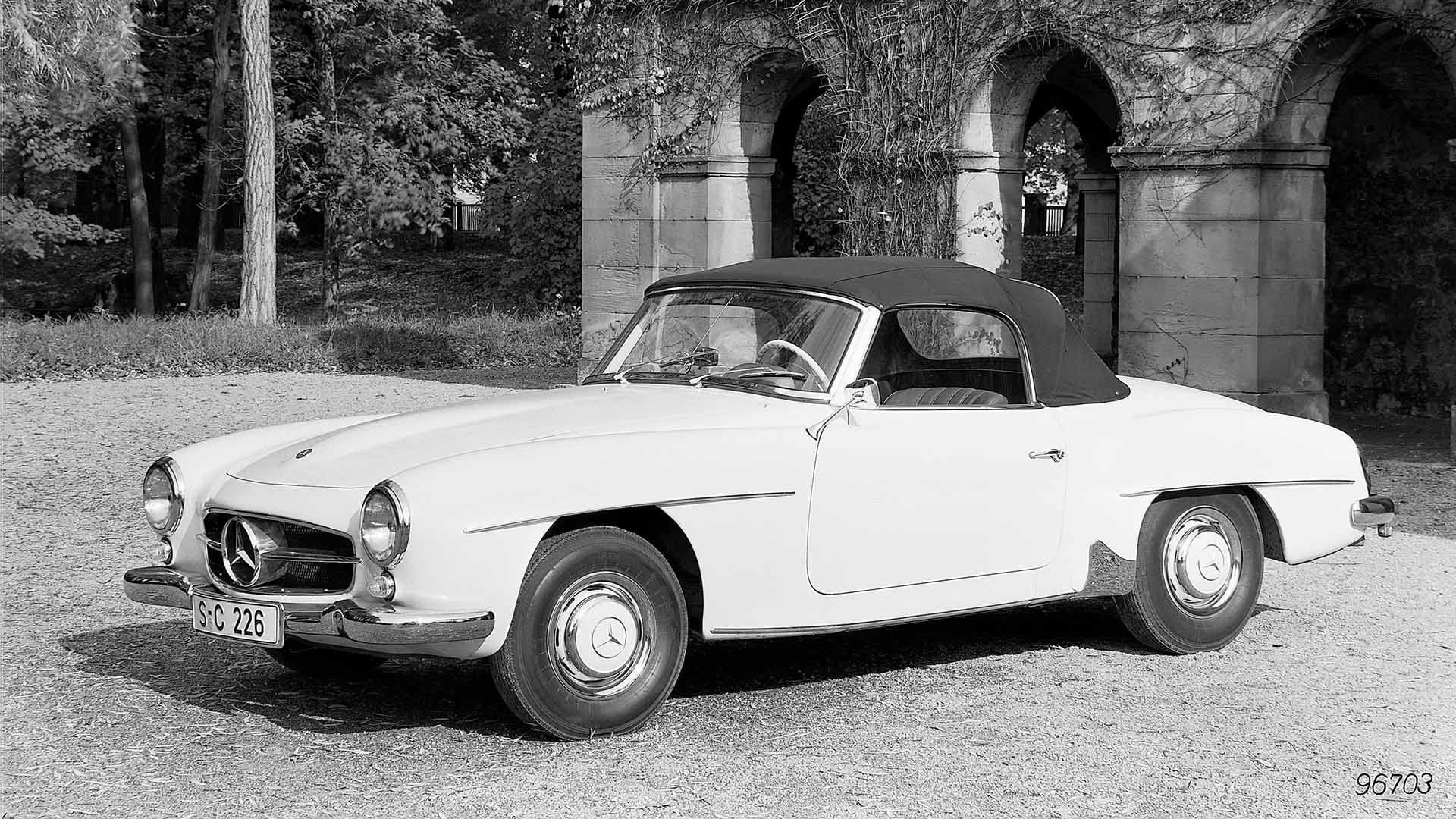
It could be argued that the 300 SL ‘Gullwing’ was the world’s first supercar. A price tag of 29,000 Marks was more than double the cost of a Mercedes-Benz 200 luxury saloon. The 190 SL Roadster, unveiled alongside the ‘Gullwing’ was a more affordable alternative, although a price tag of 16,500 Marks meant that it was still more expensive than Merc’s flagship saloon. A 1.9-litre four-cylinder delivered more modest performance, although this didn’t seem to deter buyers. Nearly 26,000 190 SL Roadsters were built between 1955 and 1963.
W198 Mercedes-Benz 300 SL Roadster
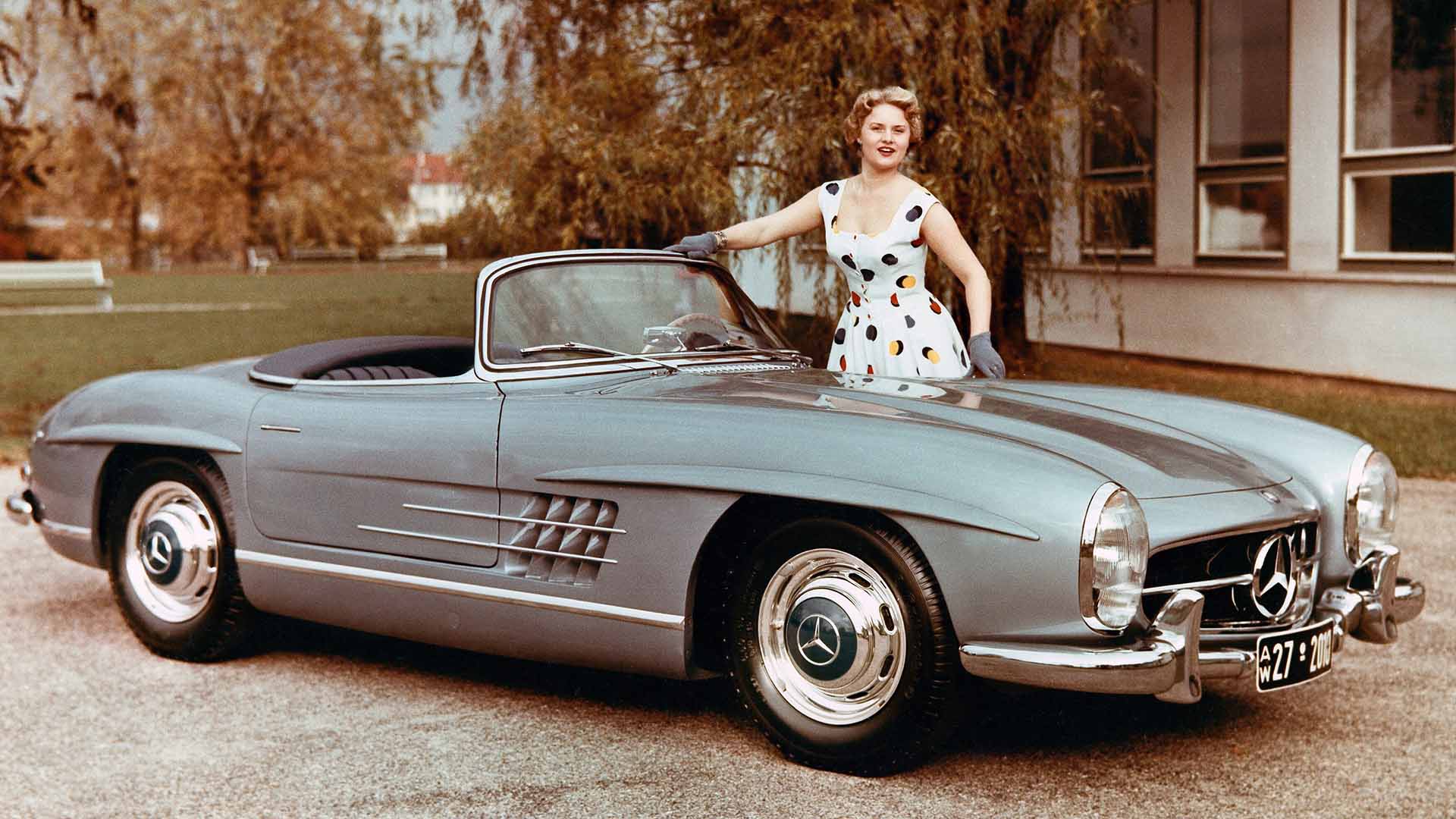
Once again, we can thank Max Hoffman for the development of the 300 SL Roadster. The American importer identified the potential for an open version of the 300 SL Coupe in his domestic market, which led to the car’s launch in 1957. Technically speaking, it was similar to the Coupe, although modifications meant that it was possible to lower the sill height enough to accommodate normal doors. Highlights included an optional coupe roof from 1958 and Dunlop front and rear disc brakes from 1961. A total of 1,858,300 SL Roadsters were built.
W113 Mercedes-Benz SL ‘Pagoda’
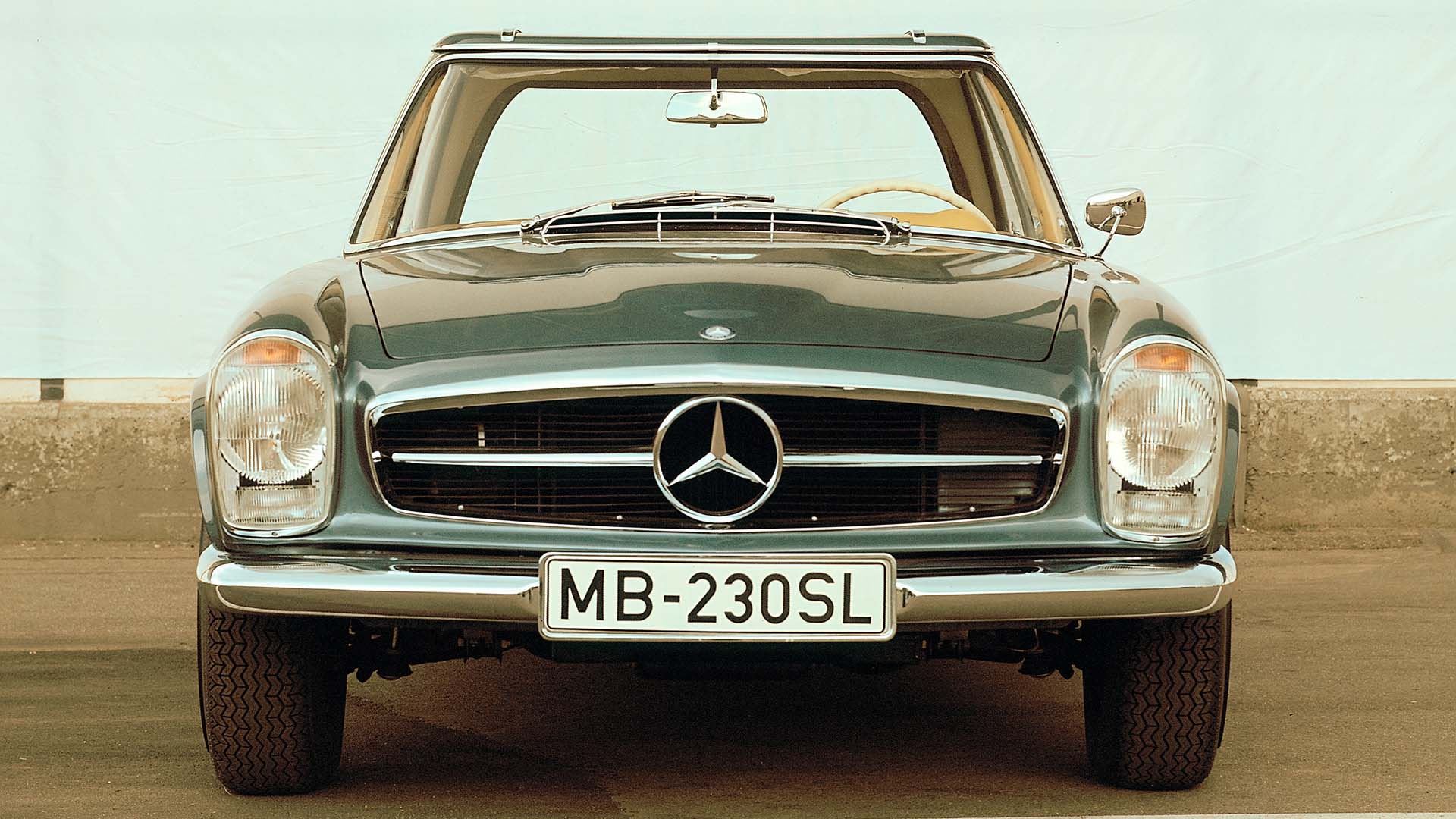
The W113 SL of 1963 was designed to replace both the 190 SL and the 300 SL of the previous generation. There were three options: an open version with a folding soft top, an open version with a hardtop, and a hardtop coupe with more luggage space. Safety was high on the agenda, with the W113 boasting a rigid passenger cell and crumple zones. An automatic transmission was available for the first time. The ‘Pagoda’ nickname stemmed from the design of the hardtop roof, which had the look of a Far Eastern temple.
Mercedes-Benz C111
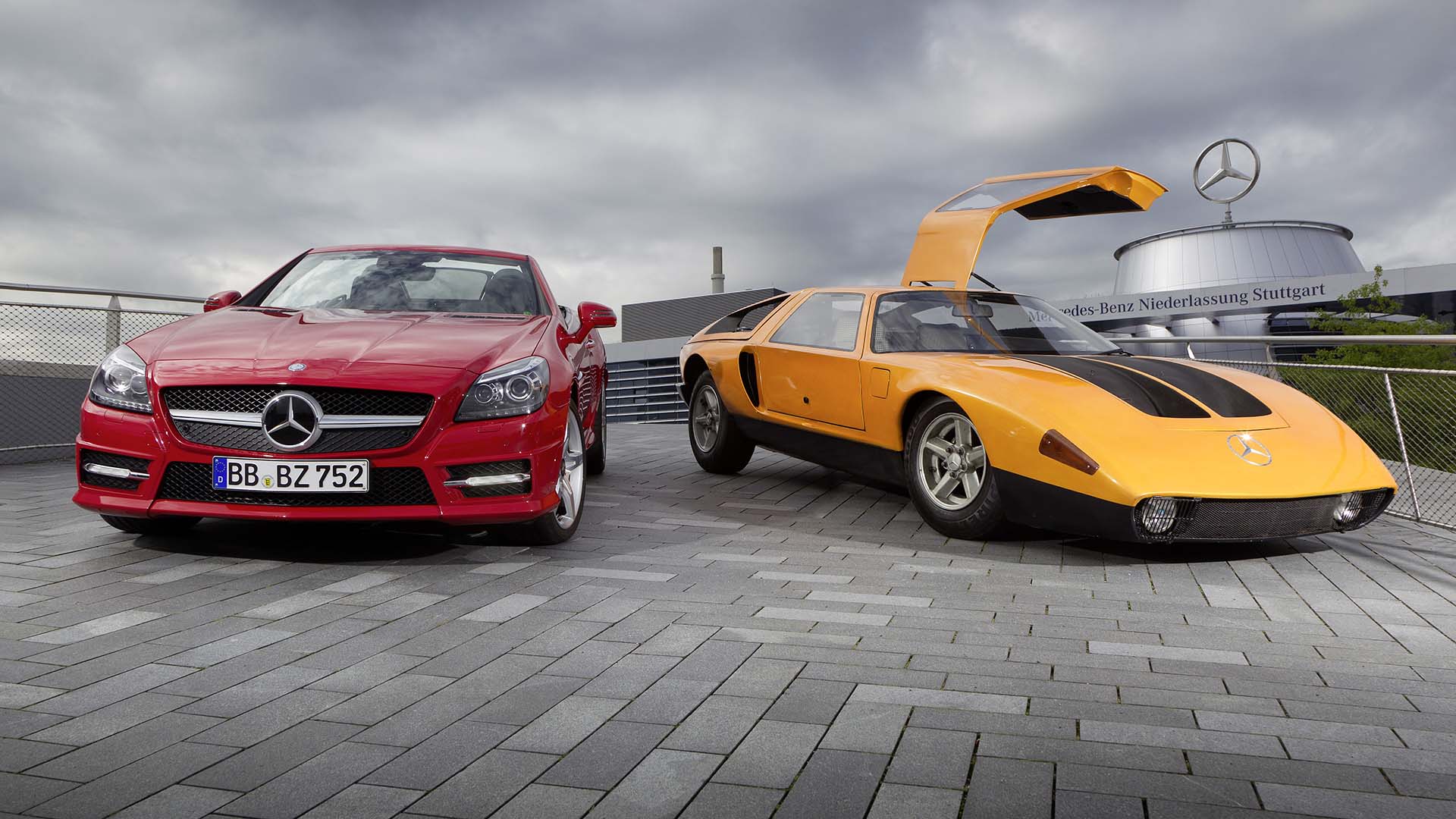
No history of Mercedes-Benz sports cars would be complete without a look at the C111. Development started in 1967, with some people speculating that Mercedes was working on a successor to the 300 SL Coupe. On the contrary, the original C111 was an experimental vehicle, designed to test the use of glass-fibre reinforced plastic and a rotary engine. Other versions followed, with Mercedes experimenting with diesel and petrol power, along with the development of aerodynamics.
R107 Mercedes-Benz SL
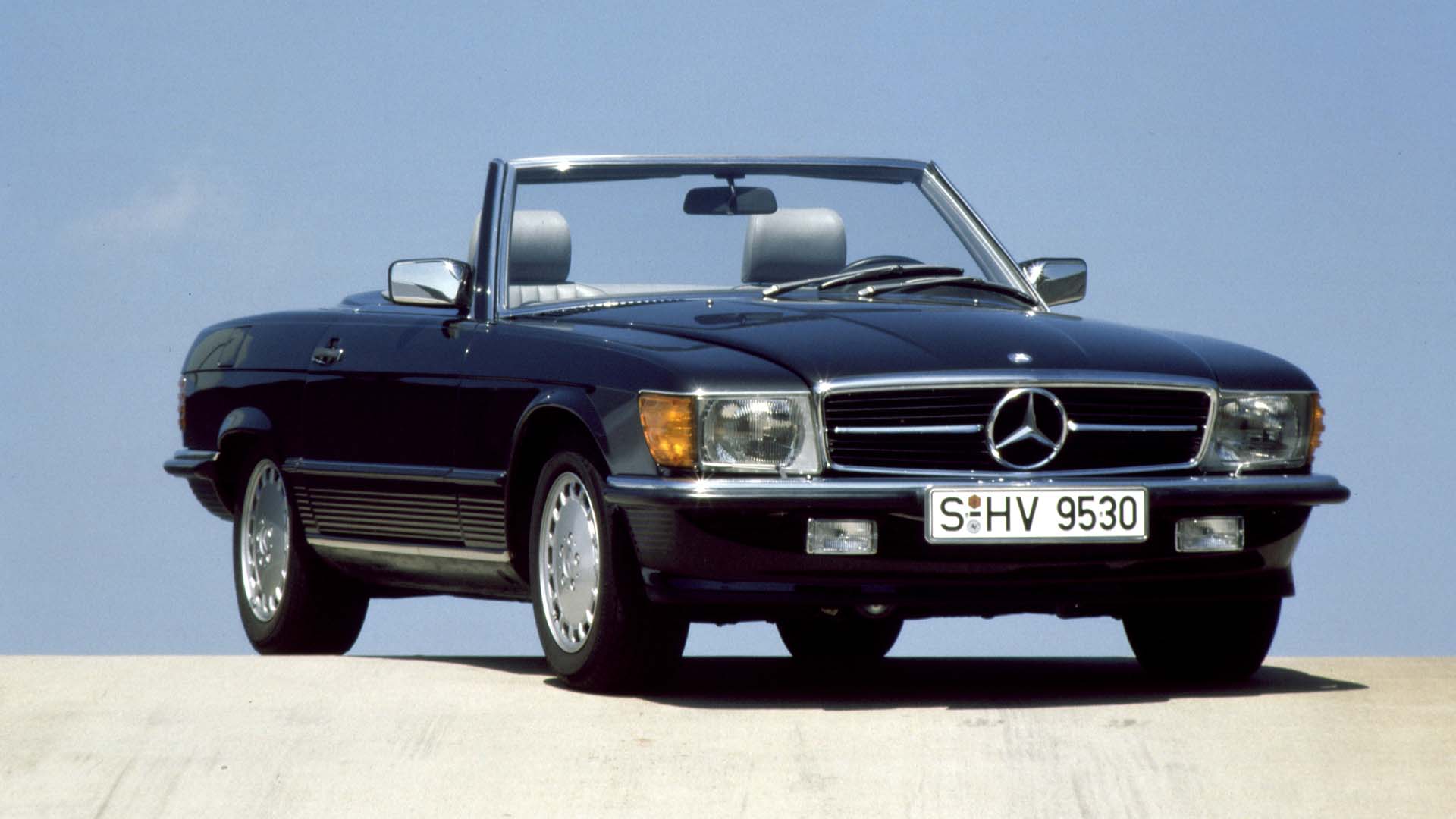
Introduced in 1971, the R107 SL enjoyed a remarkably long innings. By the time it bowed out in 1989, some 237,287 roadsters had left the factory, many of which were exported to the lucrative American market. This was the first time an SL car received an internal designation ‘R’, as in Roadster, instead of ‘W’ for Wagen. For the first time, the SL was available with a V8 engine, badged 350, 380, 420, 450, 500 and 560. The 450 SL was the most popular, accounting for nearly a third of all roadster sales.
R107 Mercedes-Benz SLC
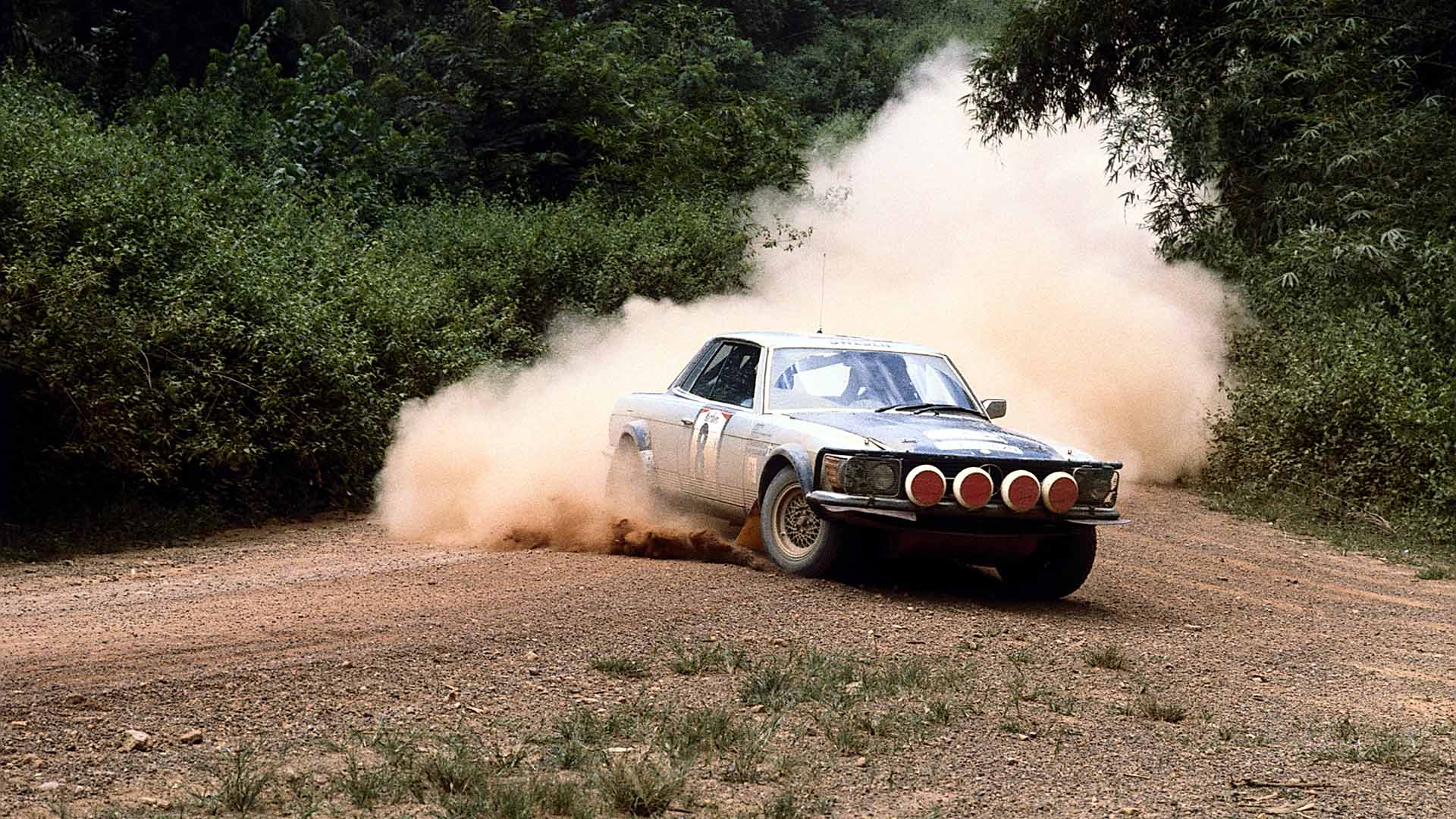
Six months after the premiere of the SL, Mercedes-Benz launched the SLC. Although it looked identical to the SL up to the windscreen, the overall height and length grew to accommodate a pair of seats in the back. Without interfering B-pillars, the side windows were fully retractable. The SLC was removed from sale in 1981, by which time some 62,888 had been built. Surprisingly, the SLC enjoyed success in rallying and long-distance endurance events.
R129 Mercedes-Benz SL
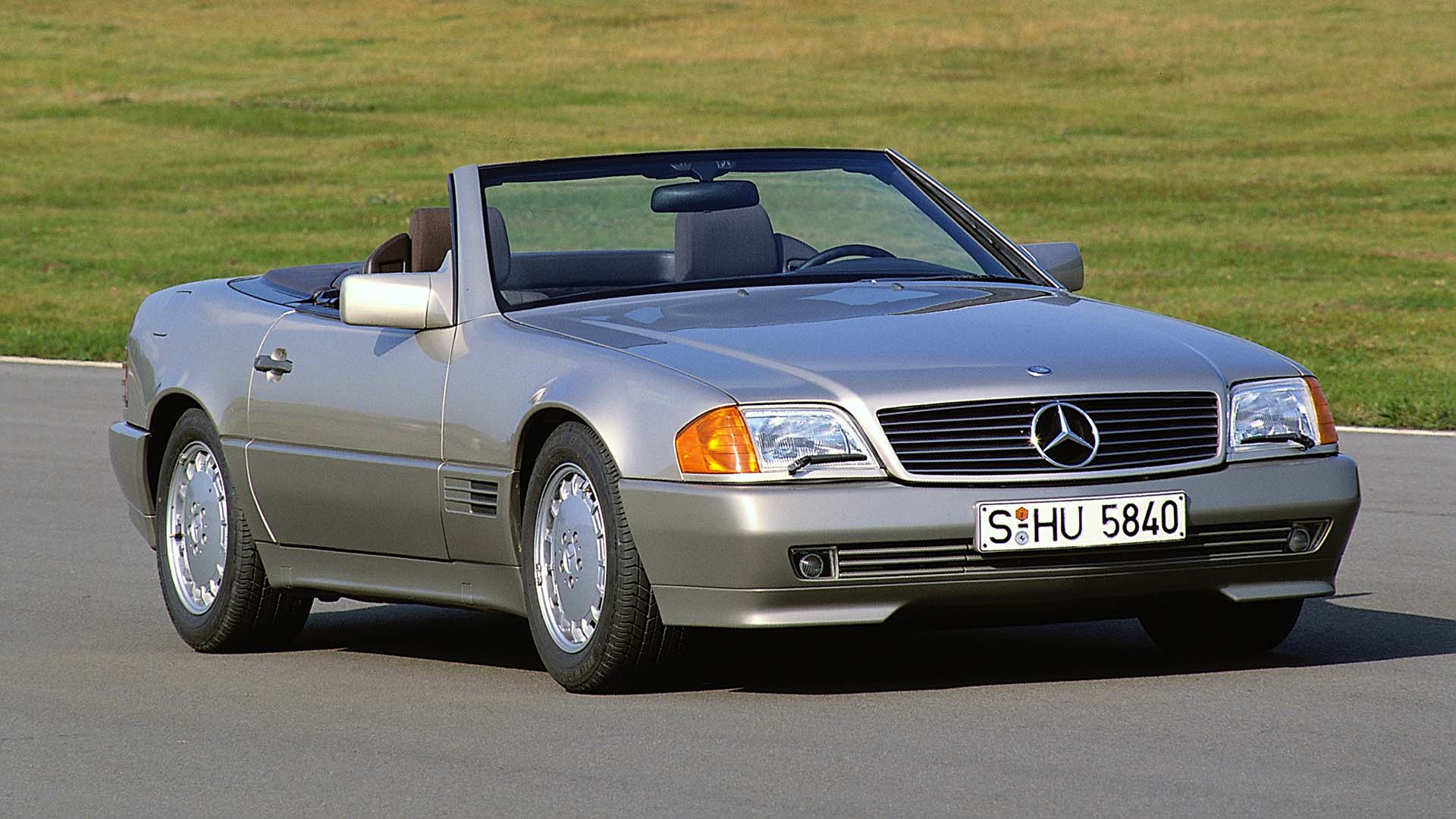
Following the R107 was a tough job, but the R129 was more than up to the challenge. Safety took another step forward, with the new SL gaining automatic roll-over bars, optional adaptive dampers, electronic stability control (1995), brake assist (1996) and cruise control down to speeds of 30km/h (1996). The first 12-cylinder SL arrived in 1992. Although a production total of 204,940 (excluding AMG models) appears to be lower than that of the R107, it was achieved over a shorter period of time (1989-2001).
R129 Mercedes-Benz SL AMG
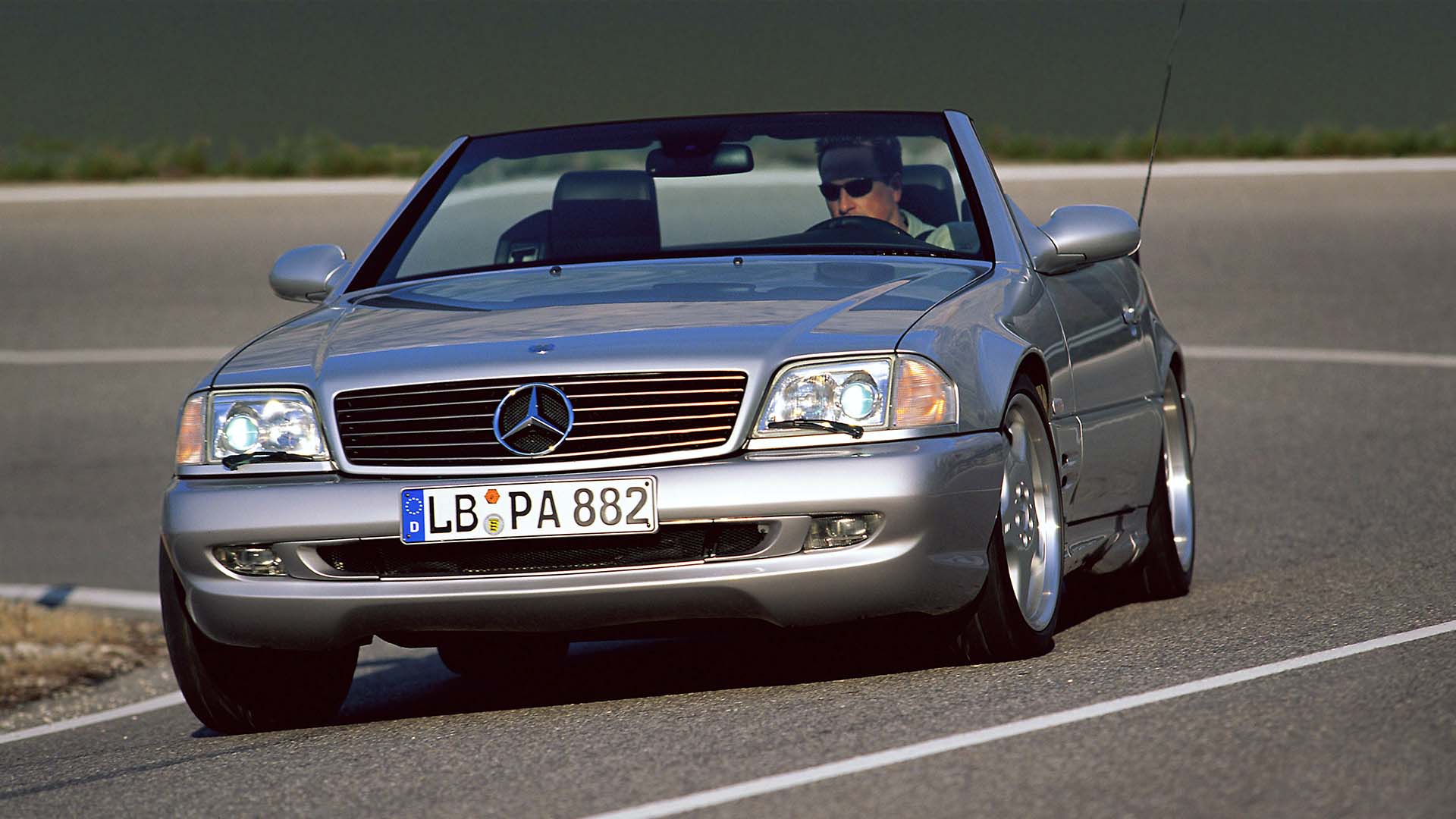
This was the first time AMG was able to work its magic on the SL. The first model following an agreement between AMG and Daimler-Benz was the SL 60 AMG, which sourced power from a 6.0-litre V8. A purely AMG version had existed from 1991 until 1993 under the name AMG 500 SL 6.0. The 5.5-litre V8 SL 55 AMG arrived in 1999, alongside the bonkers 7.3-litre V12 SL 73 AMG (pictured).
Mercedes-Benz C112
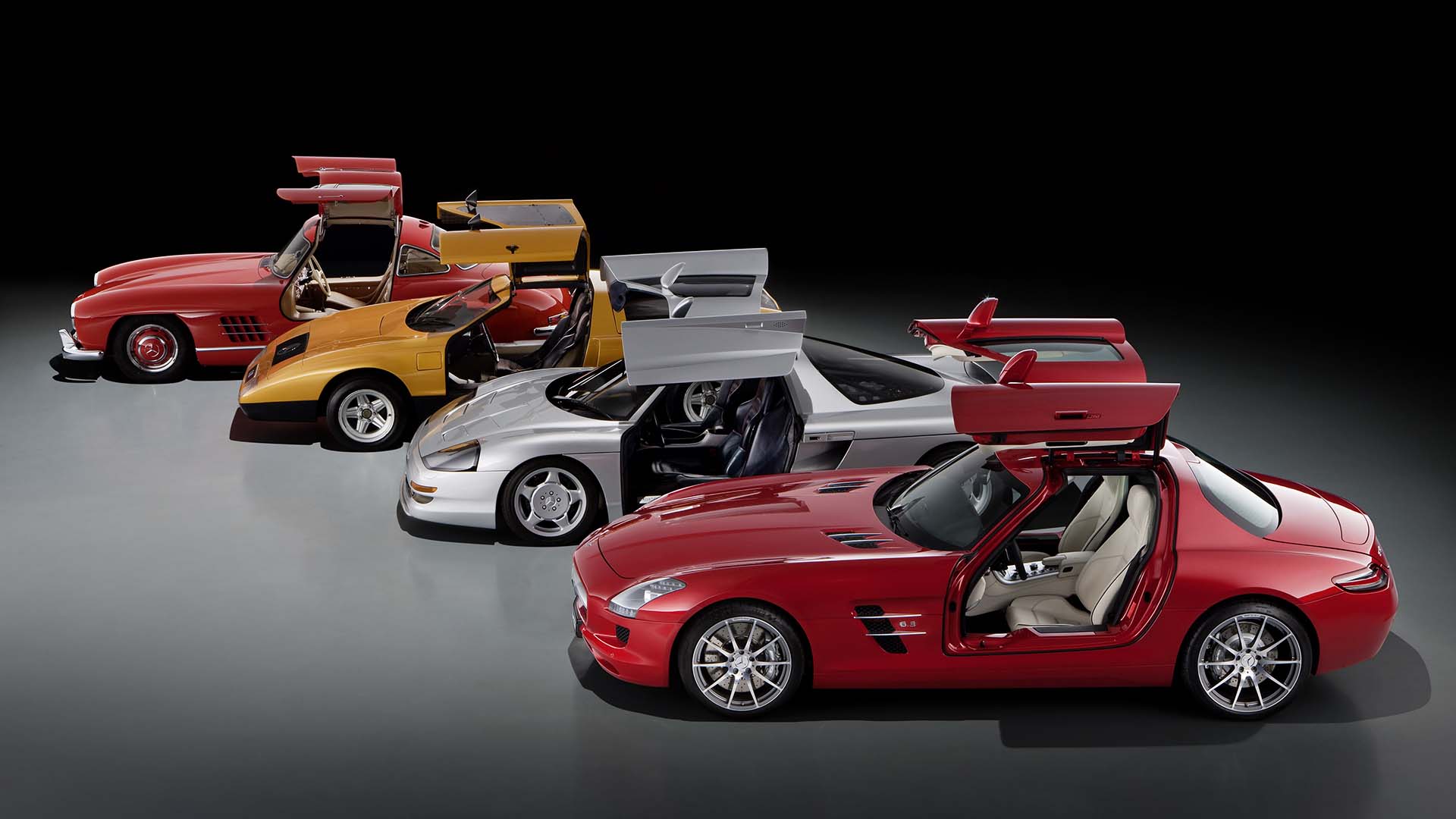
Speaking of V12 engines. Although the Mercedes-Benz C112 of 1991 is a little detached from the history of the company’s sports cars, it warrants a mention as the spiritual successor to the C111. Highlights include a 6.0-litre V12 engine, adjustable active aerodynamics, ‘gullwing’ doors, active rear-wheel steering, active rear spoiler and intelligent cruise control.
R170 Mercedes-Benz SLK
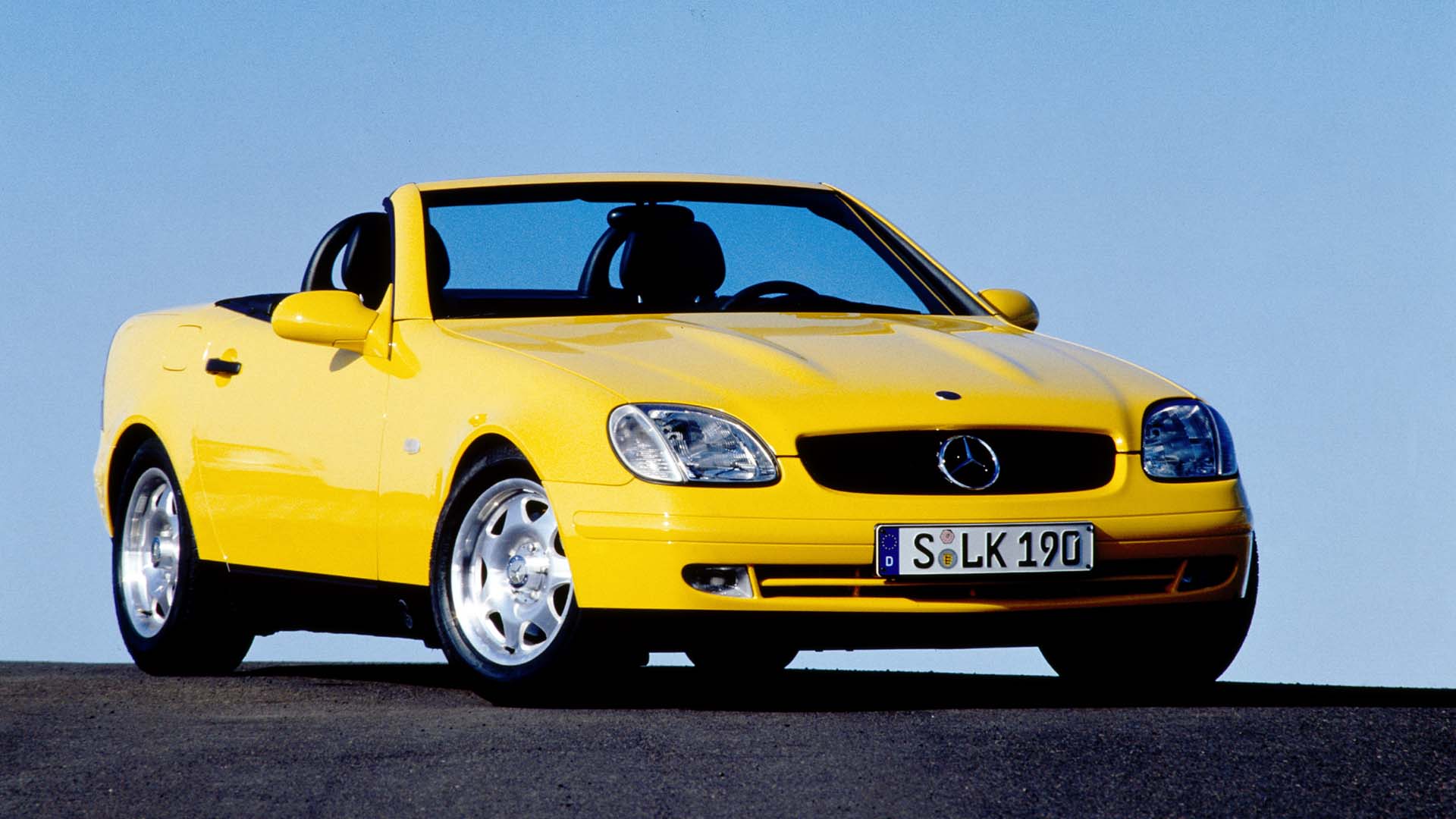
Following its debut as a design study at the 1994 Turin Motor Show, the production version of the Mercedes-Benz SLK arrived in 1996. The ‘baby SL’ featured an innovative Vario-roof system, which transformed the SLK from coupe to roadster at the touch of a button. Thanks to the styling of the SL and an affordable price tag, the SLK was a huge success, giving Mercedes a credible rival to the Porsche Boxster and BMW Z3, albeit with a softer edge.
R230 Mercedes-Benz SL
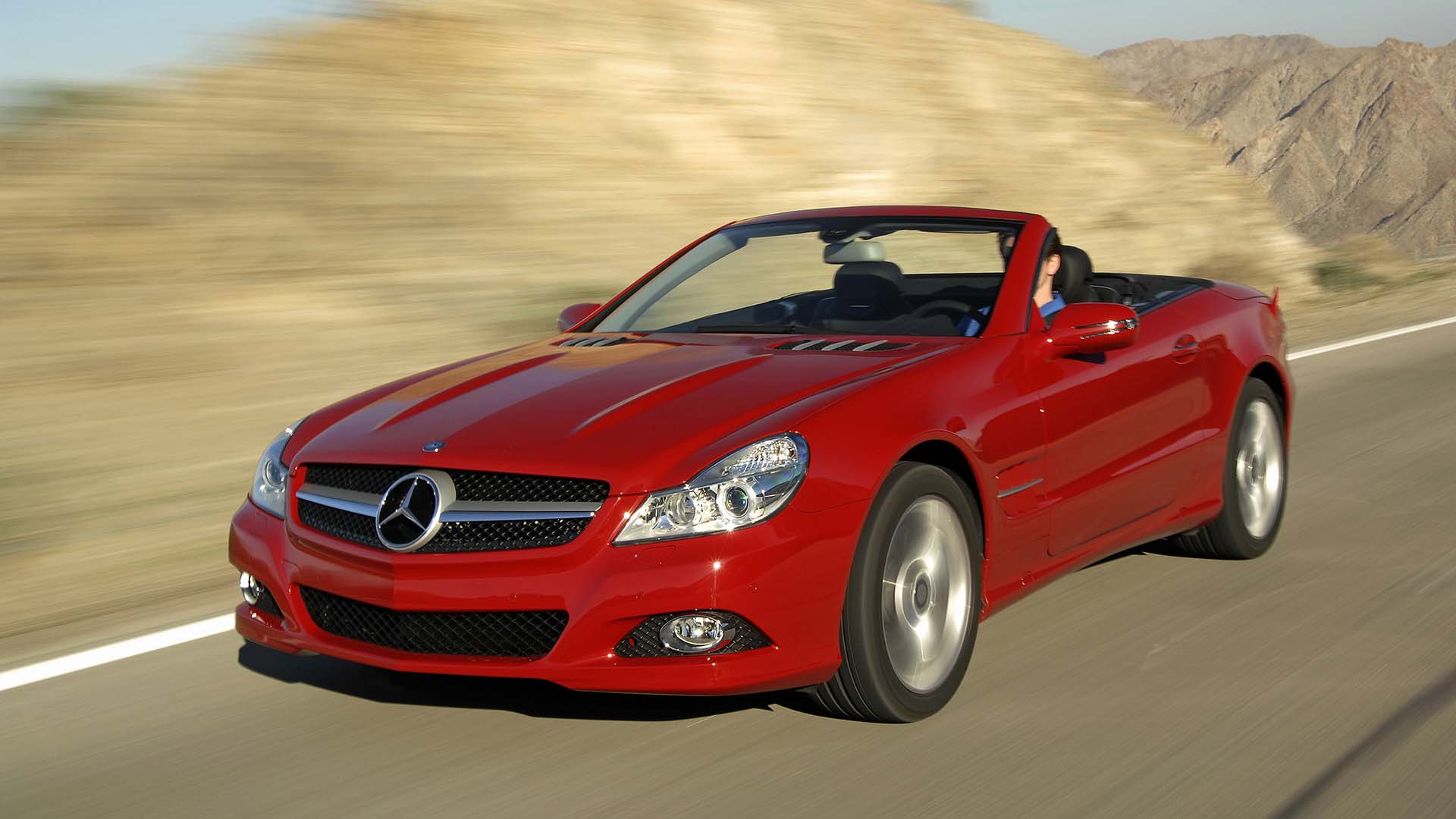
Five years after the launch of the SLK, Mercedes-Benz unveiled a new SL. Taking cues from its baby sibling, the R230 featured a Vario-roof with a folding time of 16 seconds. A roll-over bar retained its full functionality, even with the roof closed, while added safety was provided by head-thorax airbags in the doors. It launched as the SL 500, with the V8 supercharged SL 55 AMG arriving in 2001.
R230 Mercedes-Benz SL 65 Black Series
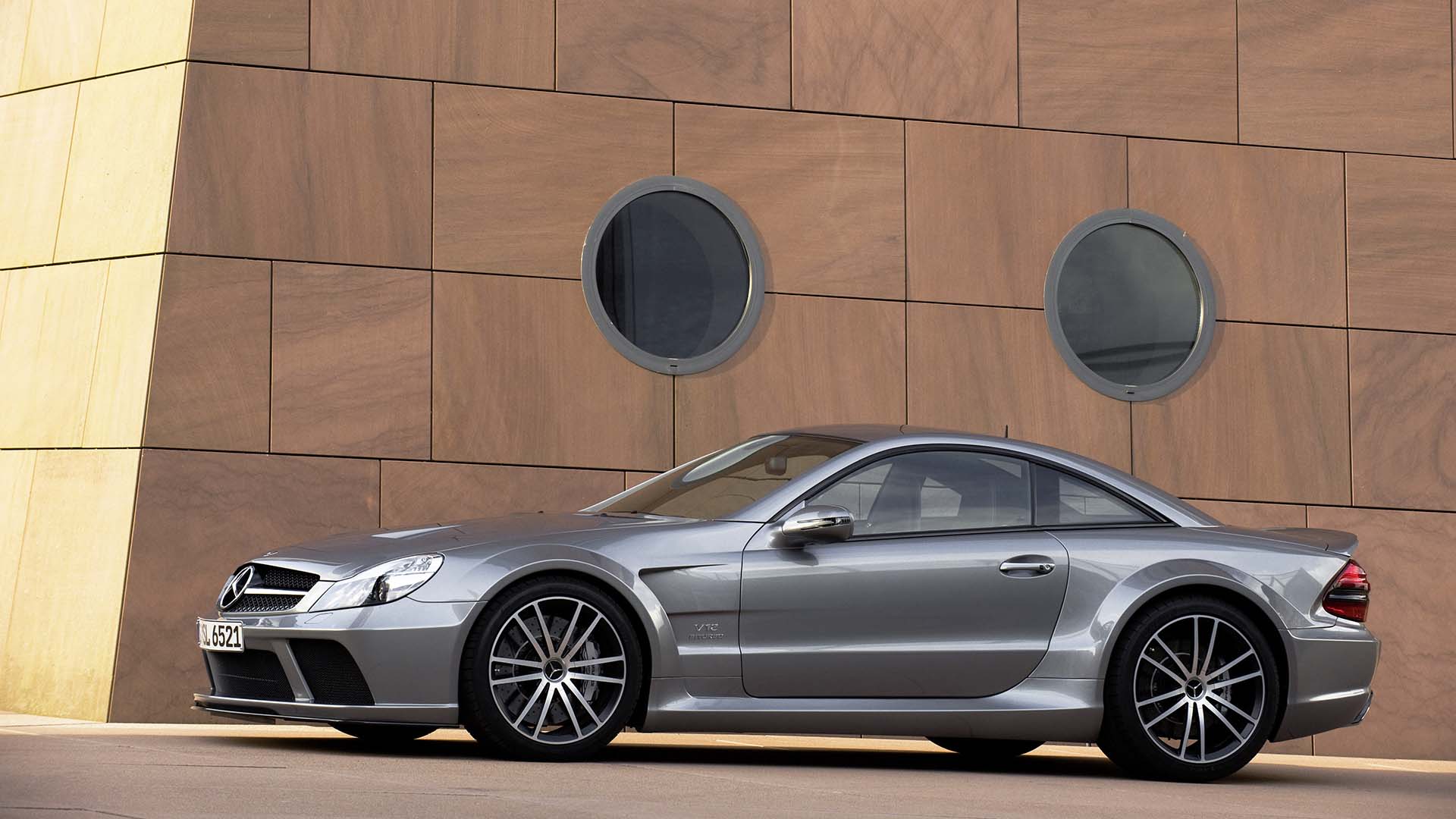
The R230 SL spawned a few interesting variants. One is the SL 65 AMG Black Series, introduced in 2008. We’ve explored our favourite AMG cars in a separate feature, but this car deserves a special mention. Its 6.0-litre V12 engine produced a monumental 1,000Nm (737lb ft) of torque, which could thrust the SL forward to 62mph in just 3.8 seconds. Top speed was limited to 199mph.
R230 Mercedes-Benz SL 63 Safety Car
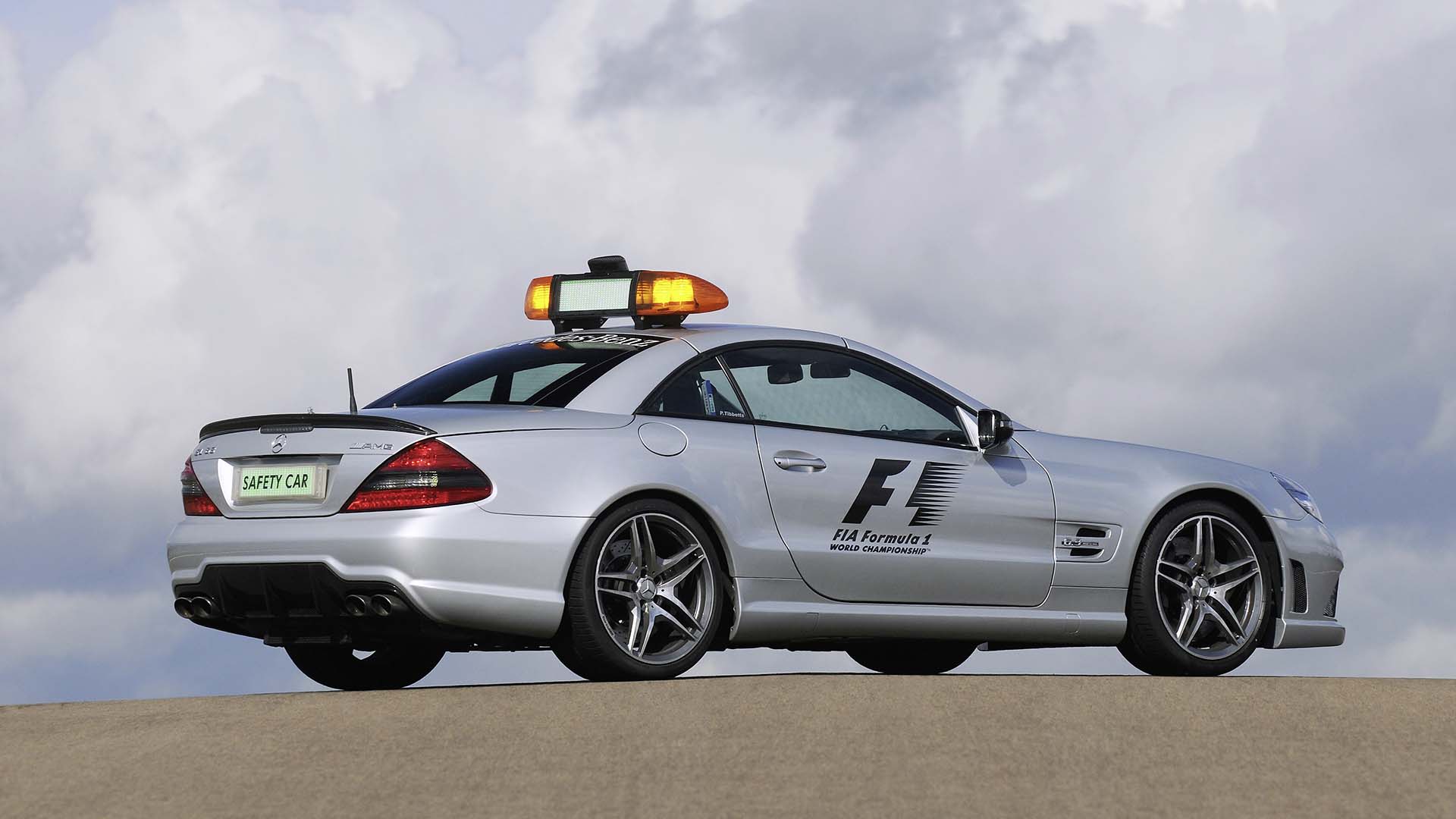
You’ll forgive us for featuring the official safety car of the 2009 F1 season…
R171 Mercedes-Benz SLK
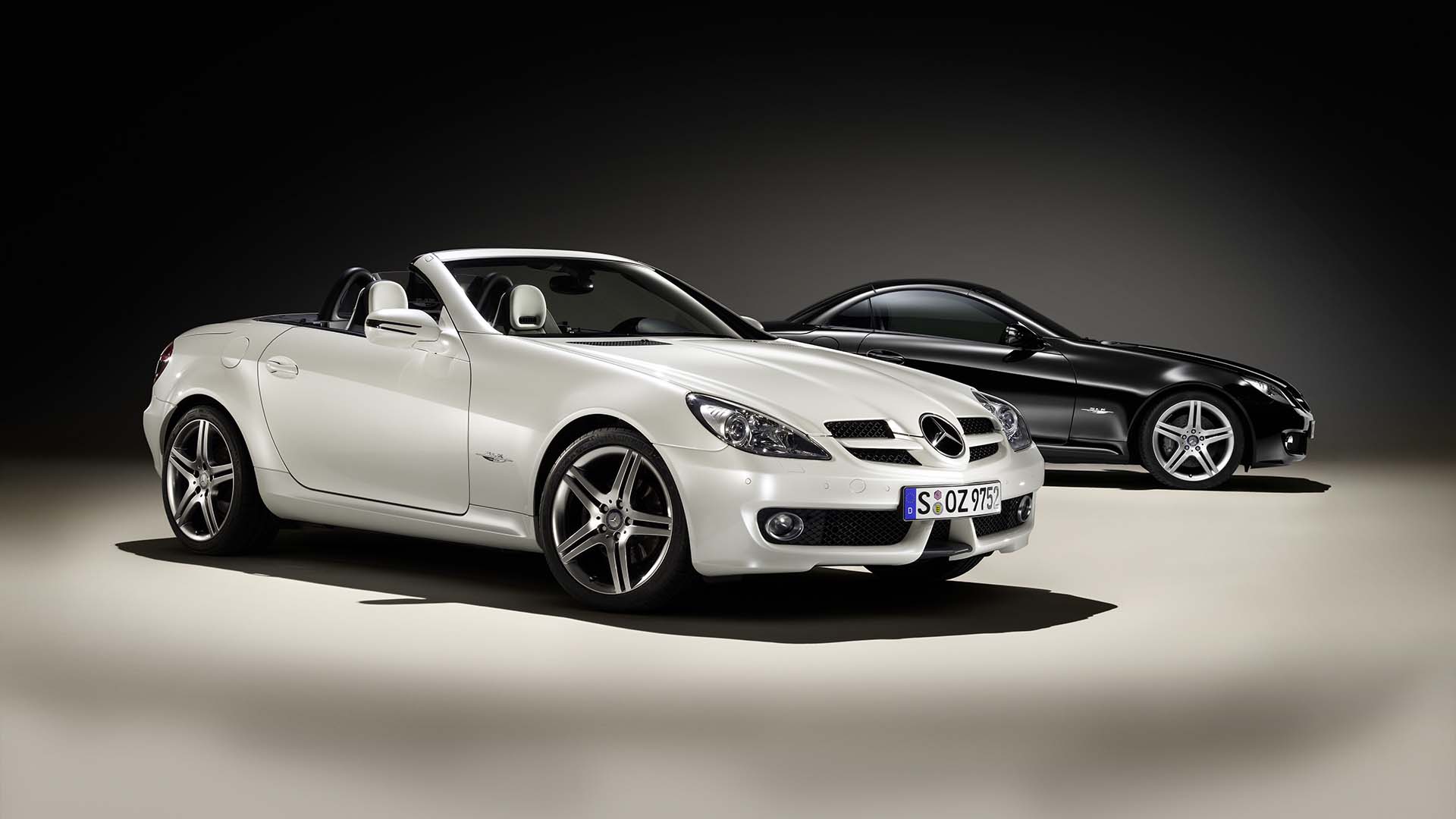
The second-generation Mercedes-Benz SLK arrived in 2004. Although the R171 SLK featured a new chassis, it couldn’t match the Porsche Boxster for driver involvement. Not that this mattered, because SLK buyers were more interested in the electric folding roof than sports car dynamics. The new SLK also saw the introduction of the Airscarf neck-level heating system, which meant the car could be used throughout winter without the driver having to dress up like a polar explorer.
R231 Mercedes-Benz SL
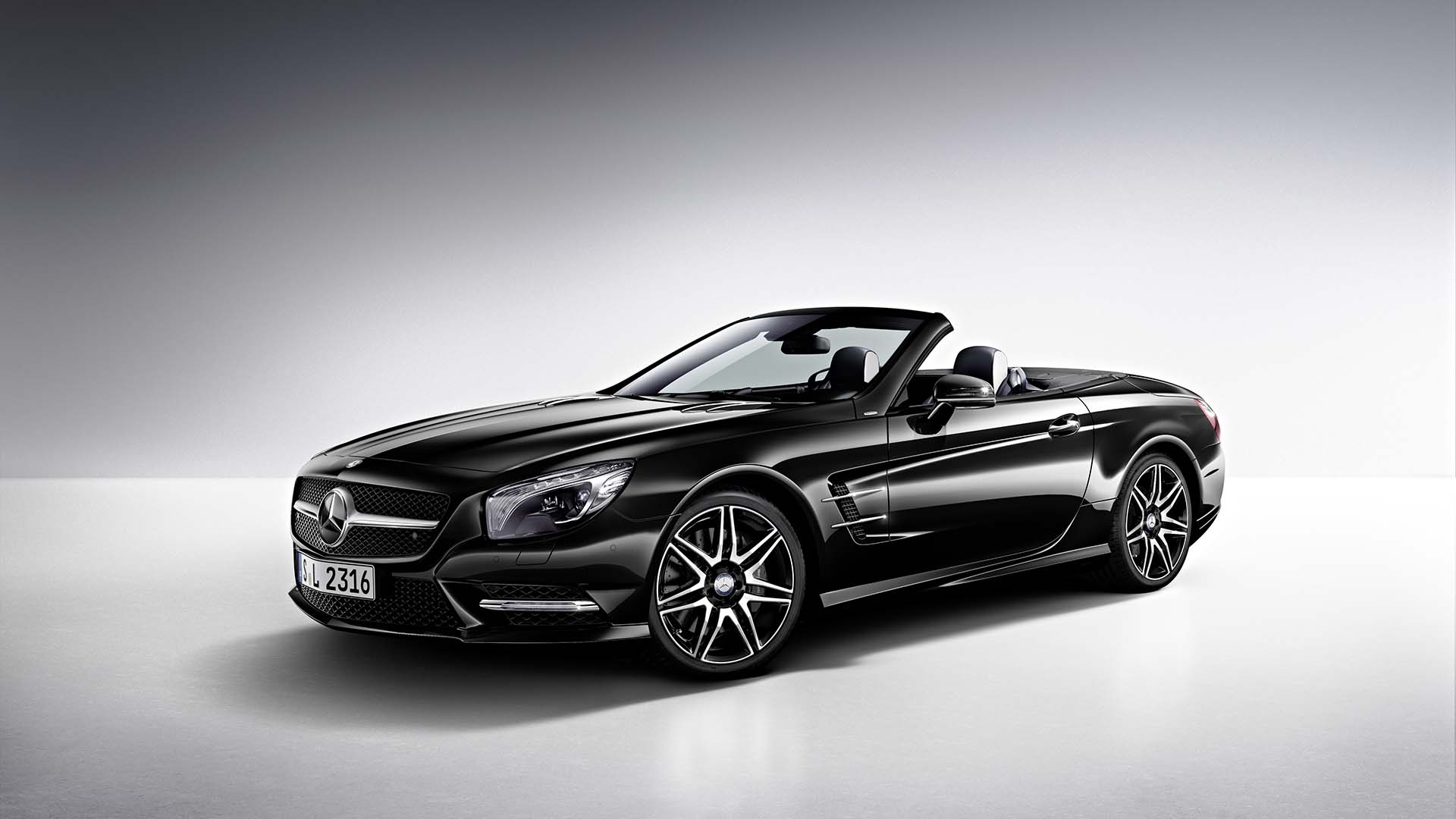
For now at least, the history of the Mercedes-Benz SL stops with the R231. More than ever, the latest SL feels more like a luxury grand tourer than a sports car. Thanks to extensive use of aluminium, the R231 was up to 140kg lighter than the R230. An all-new SL will arrive in 2021.
R172 Mercedes-Benz SLK
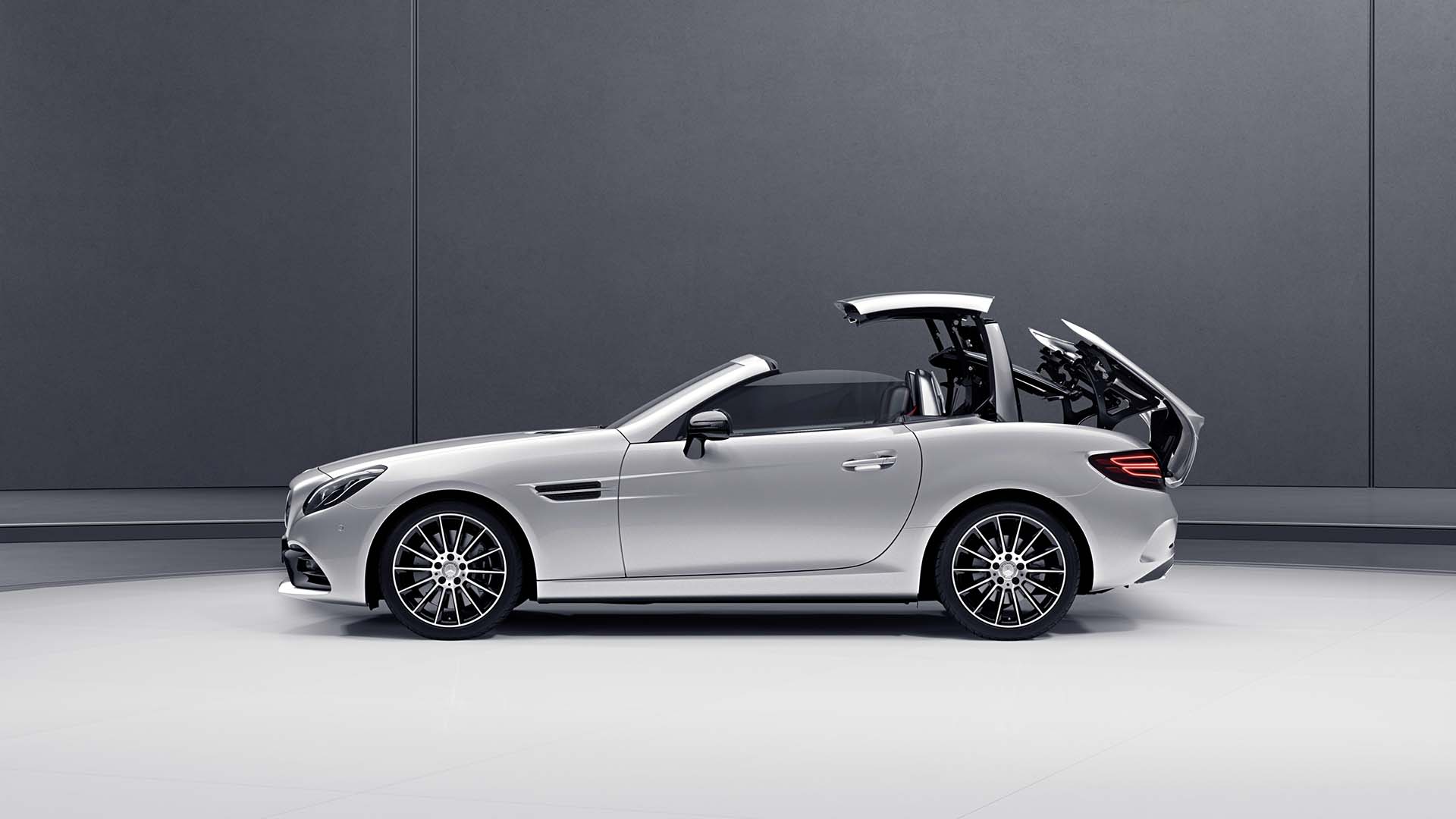
Launched in 2011 as the SLK, but renamed SLC as part of a facelift in 2015, the R172 represents the end of the line for the ‘baby SL’. Mercedes has no plans to launch a replacement, choosing to focus on electric cars and SUVs. It said goodbye with the aptly-named Final Edition of 2019.
C190/R190 Mercedes-AMG GT
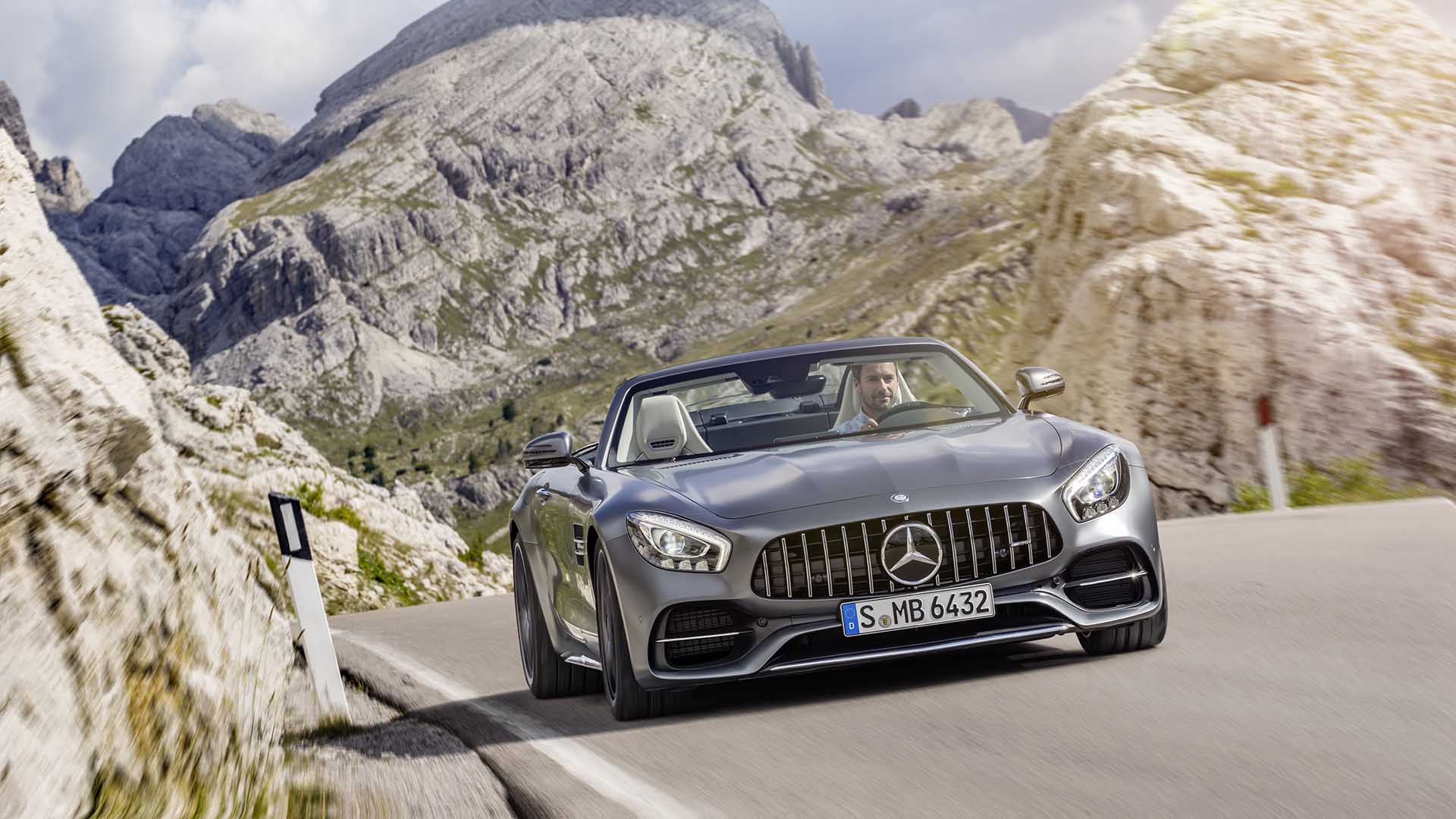
Too big to be classed as a traditional sports car, the Mercedes-AMG GT still warrants a mention here. Available as a coupe (C190) or roadster (R190), the GT is designed to steal sales from the Porsche 911, hence the range of more potent versions. We’ve driven the GT, GT S, GT C and GT R on track. Our favourite? That’d be the 522hp GT S.
50 years of the R107
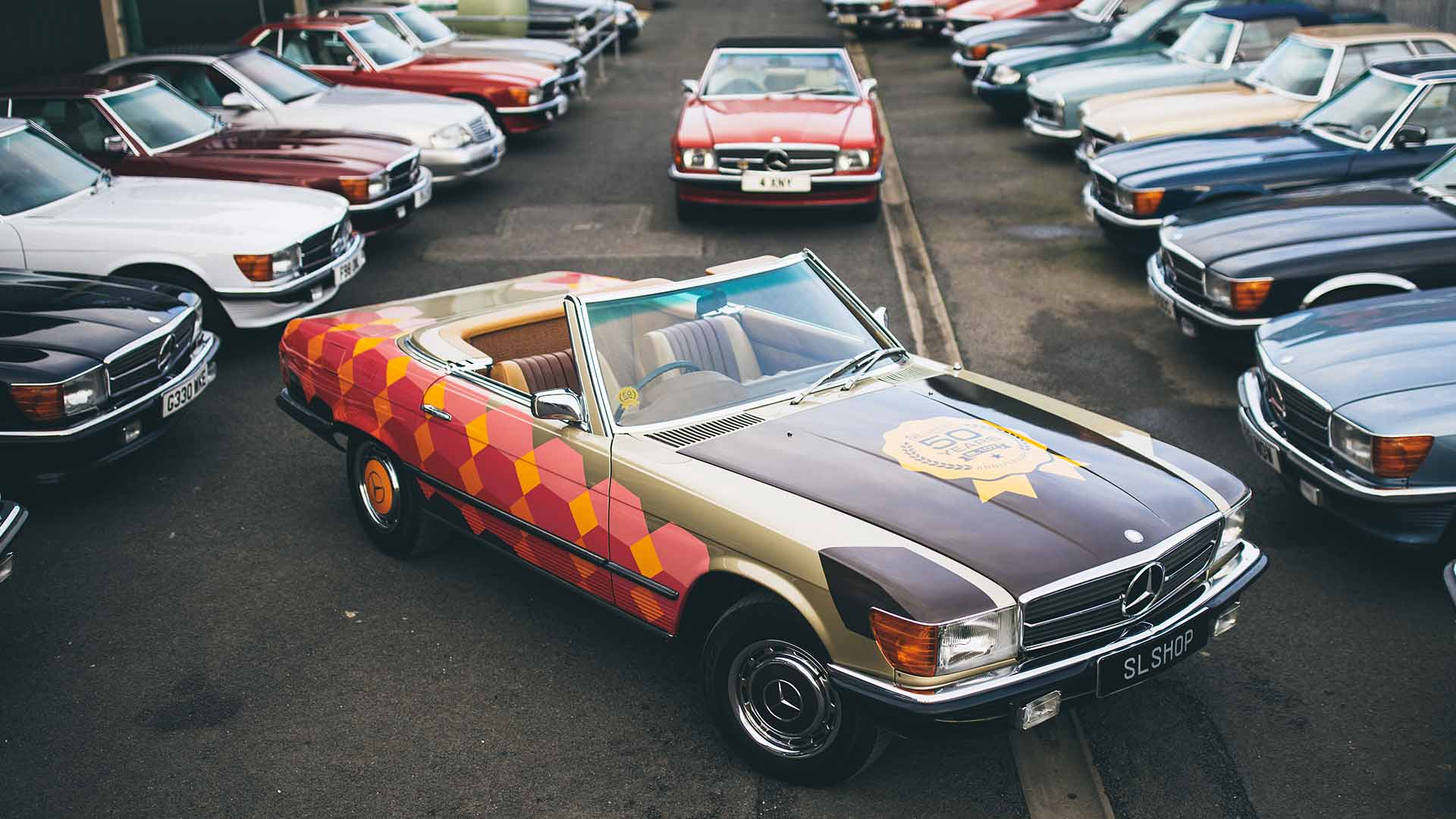
The SL Shop will mark the 50th anniversary of the R107 with a year of events, promotions and charitable donations. Sam Bailey, director of the SL specialists, said: “The R107 is such an iconic model, and hugely significant to us here at the SL Shop, so we thought we should celebrate its 50th year by having some fun.” A unique 350 SL Art Car will lead the celebrations.



[…] means cars such as this rare, alloy-bodied 300SL have not been seen in public for […]